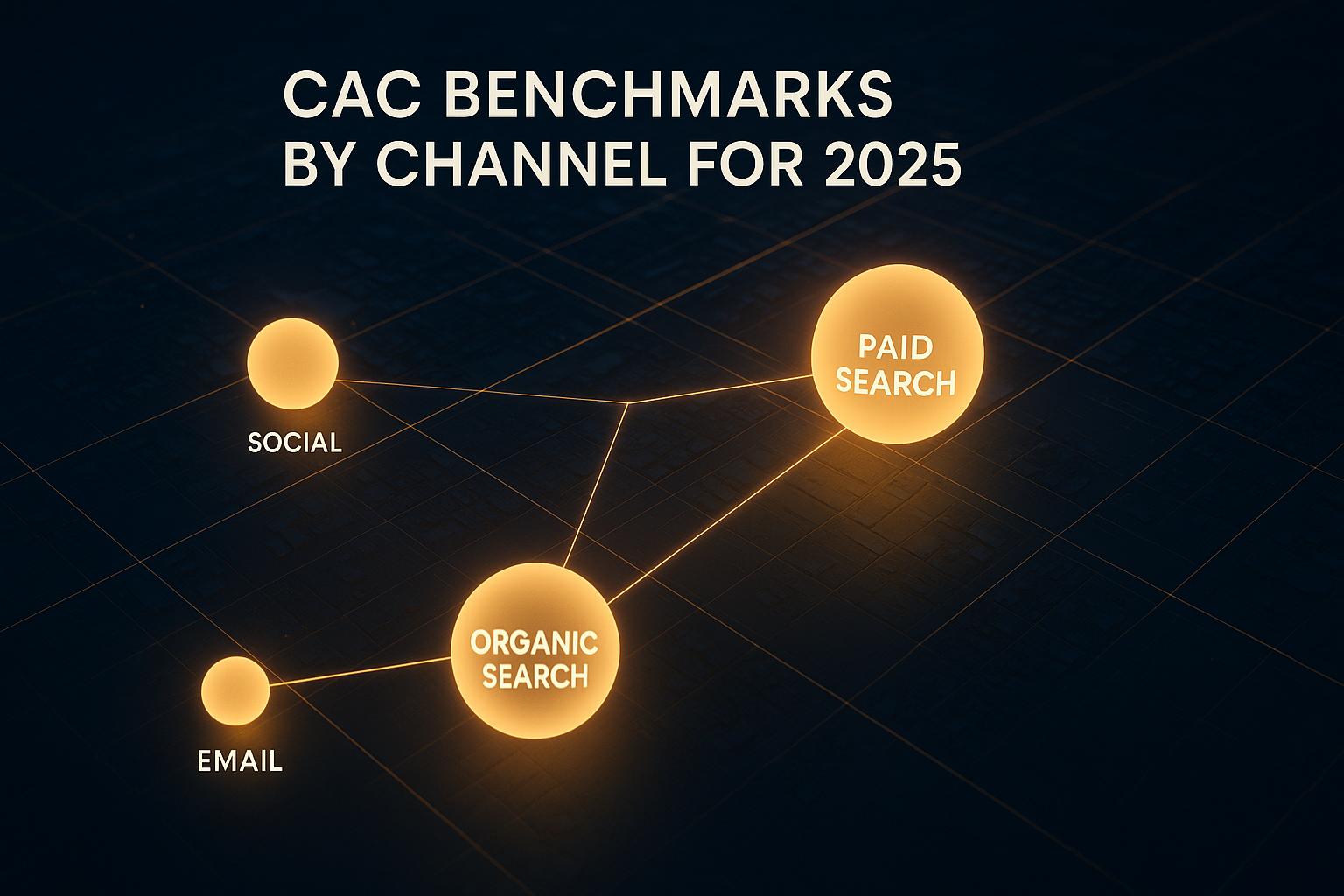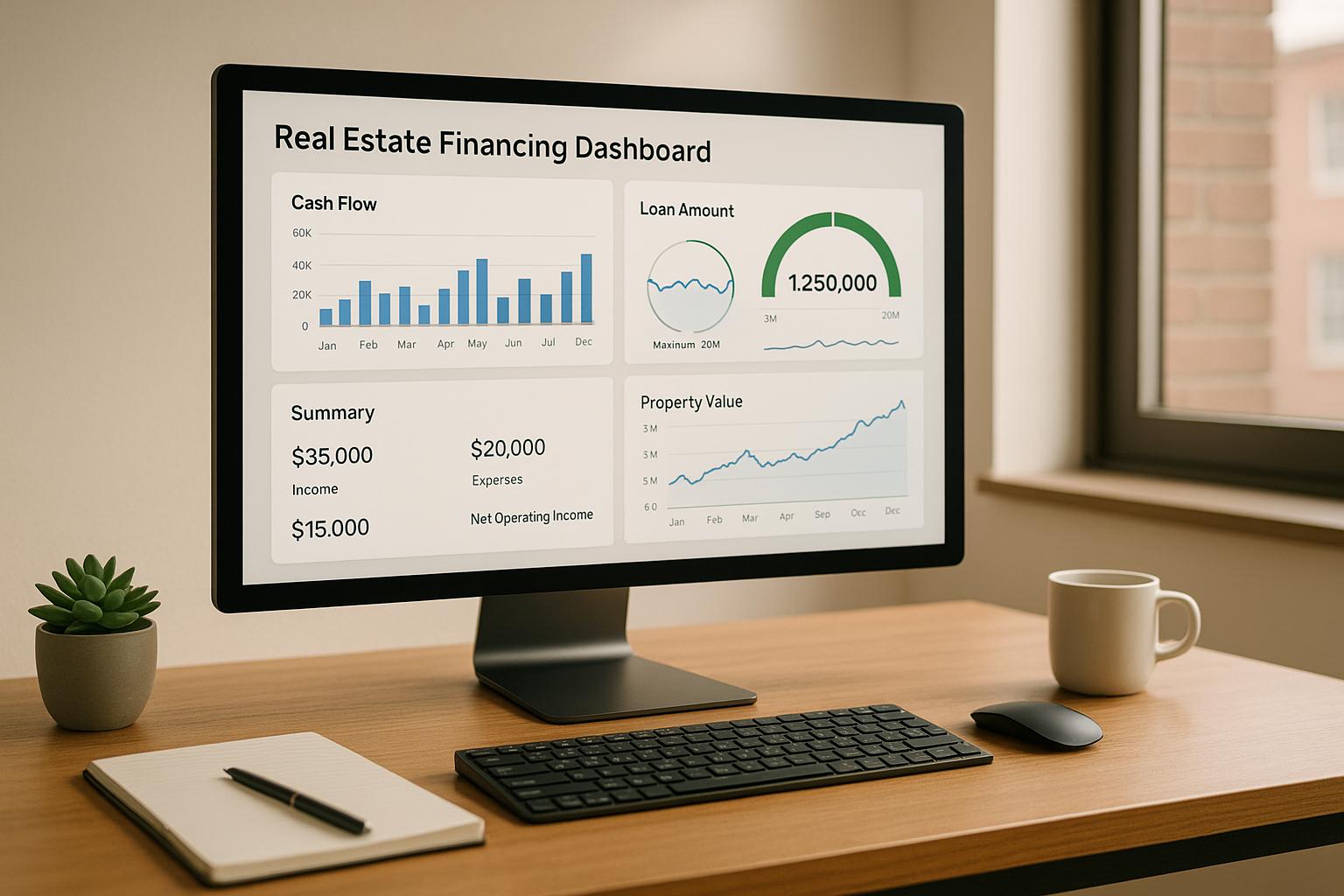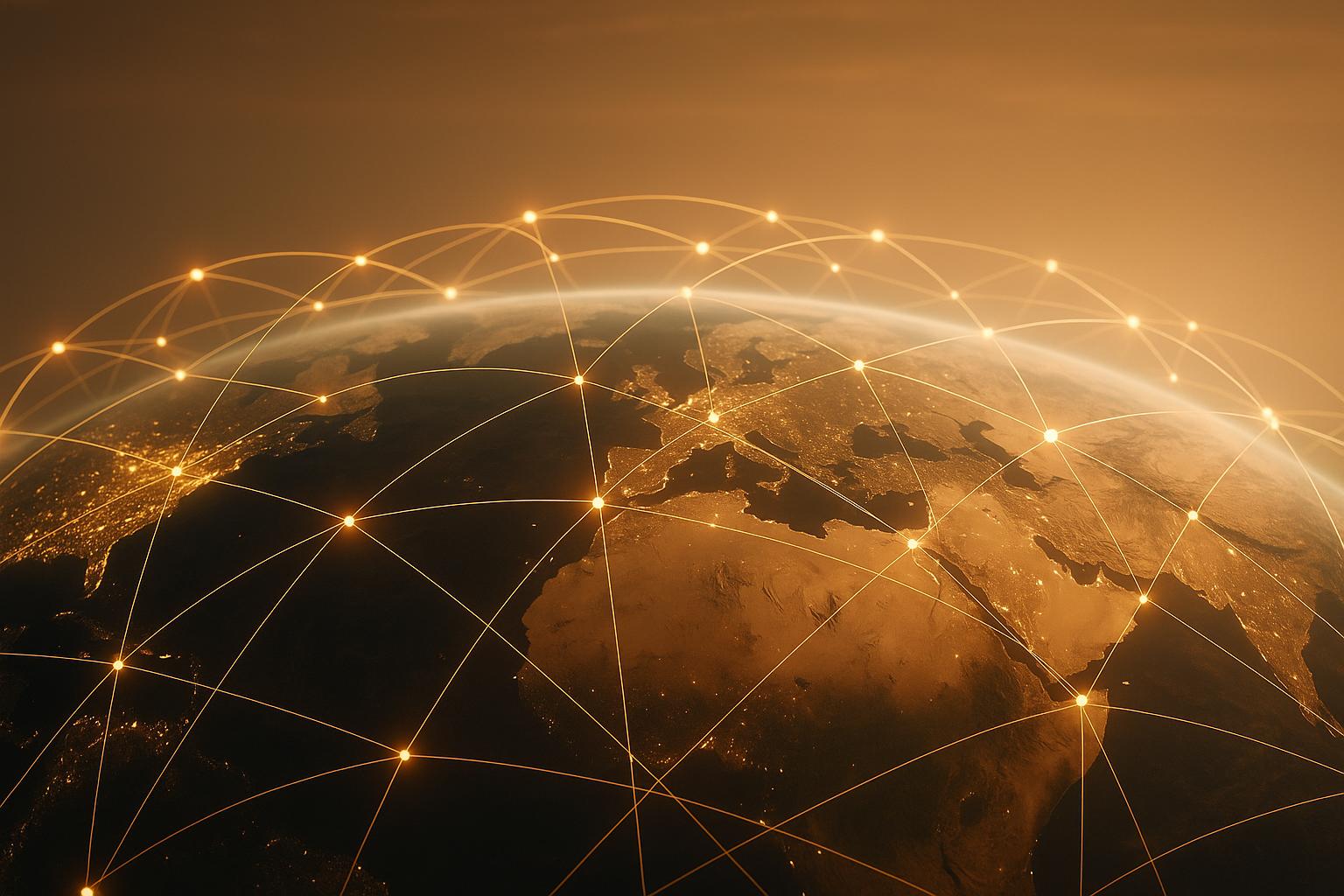CAC Benchmarks by Channel for 2025

Customer Acquisition Costs (CAC) are rising fast. Between 2023 and 2025, CAC jumped by 40–60%, driven by higher competition, privacy rules, and attribution challenges. Here's what you need to know:
- Paid Search: Average CAC is $802 for B2B and $70.11 for general campaigns. High-intent traffic but costly.
- Paid Social: Facebook ($230) is cheaper than LinkedIn ($982), but privacy changes have reduced ad efficiency.
- Organic Search (SEO): Long-term savings with CAC as low as $290, but requires upfront effort.
- Referral Programs: Lowest CAC at $150 for B2B SaaS, leveraging trust and incentives.
- Outbound Sales: Highest CAC at $1,980 for B2B but effective for large deals.
Key takeaway: Balance CAC with customer lifetime value (LTV). Aim for at least a 3:1 LTV:CAC ratio to stay profitable. Use AI and analytics to optimize channels, cut costs, and improve attribution accuracy.
How We Collected CAC Benchmark Data
How CAC Is Calculated
As mentioned earlier, Customer Acquisition Cost (CAC) is calculated by dividing total acquisition costs - like paid advertising expenses, sales team salaries, and associated fees - by the number of new customers acquired during a specific period [3]. For example, if a company spends $50,000 on Google and Bing Ads in January 2025 and gains 500 new customers, the CAC would be $100 per customer.
It's important to note that costs unrelated to the initial acquisition, such as customer support or order fulfillment, are excluded from the calculation. However, accurately assigning credit to specific acquisition channels can be tricky, especially in multi-touch customer journeys. For instance, a customer might first discover a brand through organic search, engage with it on social media, and finally convert via a paid ad. Properly attributing these touchpoints requires sophisticated tracking systems, which many businesses are still refining.
Geographic and currency factors also play a role in standardizing CAC. All figures in this report are presented in U.S. dollars, converted using current exchange rates and formatted according to U.S. conventions (e.g., $1,000.00). This ensures fair comparisons across different markets and data sources [9]. With these standardized metrics in place, let’s dive into the data collection process.
Data Collection and Sources
To ensure the accuracy and reliability of the CAC benchmarks for 2025, we relied on a range of carefully selected data sources. These sources were chosen to reflect a standardized and robust approach to benchmarking.
The primary dataset comes from Optifai's Sales Ops Benchmark 2025, which analyzed performance data from 939 B2B companies during the first three quarters of 2025 [7]. Additional insights were drawn from First Page Sage's 2025 digital marketing analysis, Shopify's internal eCommerce data, and industry-specific surveys from sectors like fintech, SaaS, and retail. Each of these sources underwent rigorous validation to filter out anomalies and ensure high-quality data [7].
Phoenix Strategy Group also contributed valuable insights, leveraging its experience with over 240 portfolio companies. Their proprietary data provided a broad view of CAC across industries and growth stages. Using advanced data engineering tools and over 200 platform integrations, they captured detailed and reliable acquisition metrics [1].
Data normalization was a critical part of the process. To ensure fair comparisons, raw CAC figures were standardized to account for differences in reporting periods, currency fluctuations, and variations in how customer acquisition is defined. Weighted averages and medians were applied to adjust for company size and reporting discrepancies.
The methodology reflects the evolving digital landscape of 2025. With the rise of integrated analytics platforms, AI-driven attribution models, and real-time campaign monitoring, data accuracy has significantly improved. However, these advancements also demand more sophisticated data engineering and validation processes [8].
The final dataset reveals a 40% increase in CAC between 2023 and 2025. This surge is attributed to factors like increased competition, stricter privacy regulations, market saturation, and ongoing challenges in attribution [4]. These benchmarks offer growth-stage businesses a reliable framework for assessing their customer acquisition costs across various channels.
What Is A Good Customer Acquisition Cost Benchmark?
2025 CAC Benchmarks by Channel
The customer acquisition game has changed a lot in 2025. Each channel now comes with its own costs and opportunities, making it crucial to plan budgets wisely. Here's a breakdown of the key channels, their cost structures, and how they vary by industry.
Paid Search (Google Ads, Bing Ads)
Paid search remains a pricey but essential channel. The average customer acquisition cost (CAC) has climbed to $802.00, with Google Ads' cost per lead increasing by 5.13% to $70.11 in 2025 [6][8]. For SaaS companies, CAC can range from $200.00 to over $700.00, but B2B SaaS businesses often face higher costs, typically spending between $1,200.00 and $2,000.00. On the other hand, eCommerce businesses usually see CAC fall between $50.00 and $130.00 per customer [5][4].
For B2B companies, the median new CAC ratio in paid search is around $2.00 - meaning they spend $2.00 to generate $1.00 in new annual recurring revenue [8]. This underscores the importance of carefully managing ad spend to align with revenue goals.
Paid Social Media (Facebook, LinkedIn, Instagram)
Social media advertising costs vary widely depending on the platform and audience. Facebook Ads offer a relatively affordable CAC at $230.00, making it a go-to for B2C brands [6]. Meanwhile, LinkedIn Ads stand out as one of the most expensive options, with an average CAC of $982.00, reflecting their effectiveness in reaching high-level B2B decision-makers [6]. Platforms like Instagram fall somewhere in between, with costs depending on the industry and campaign specifics.
However, privacy changes - such as iOS updates and GDPR - have made targeting less precise, driving up CAC by 40% between 2023 and 2025 [4]. These shifts highlight the need for advertisers to adapt their strategies to maintain efficiency.
Organic Search (SEO)
SEO-driven acquisition takes time but can deliver long-term savings. CAC for organic search typically ranges between $480.00 and $942.00 per customer [6]. Unlike paid channels, SEO requires months of effort in content creation and technical optimization before showing results. But once established, the CAC can drop significantly - sometimes as low as $290.00, which is far below the $802.00 average seen in paid search [6].
This makes SEO a valuable long-term strategy, though balancing it with short-term paid efforts is key to achieving the best overall results.
Referral and Partner Programs
Referral and partner programs stand out for their efficiency, often delivering the lowest CAC. For B2B SaaS companies, the average CAC through these channels is $150.00 [7]. Referrals benefit from built-in trust, and well-structured incentive programs can make them even more effective. In B2C eCommerce, for example, enticing rewards can drive both referrers and new customers to act.
While these channels are cost-effective, they work best when paired with other strategies like paid and organic acquisition to maximize reach and impact.
Outbound Sales and Cold Outreach
Costs for outbound sales can vary significantly, ranging from $267.00 to $400.00 per customer. For sales development representative (SDR)-driven efforts, CAC can climb as high as $1,980.00 [6][7]. These higher costs stem from investments in sales teams and the tools they use. Success in outbound sales often depends on precise targeting and strong qualification processes, which can be improved through data analytics and thorough prospect research.
sbb-itb-e766981
What's Driving CAC Changes in 2025
Customer acquisition costs (CAC) are climbing, and several factors are pushing these costs higher. For businesses, understanding these trends is crucial to adapting strategies and maintaining profitability.
Economic and Industry Factors
One major reason for rising CAC is the increasing competition for digital ad space. Platforms like Google, Facebook, and newer players such as TikTok are seeing a surge in advertisers, which has driven up bidding costs. Over the past eight years, CAC has jumped by 222%, with a 40% increase between 2023 and 2025 alone[8][4].
Privacy regulations have also reshaped the digital advertising landscape. Updates like iOS privacy changes and GDPR requirements have made precise targeting more difficult, forcing businesses to use broader - and more expensive - targeting strategies. For instance, the average cost-per-lead for Google Ads reached $70.11 in 2025, marking a 5.13% increase[8].
Another challenge is attribution. Many companies struggle to accurately track the customer journey, leading to inefficient budget allocation. Some ecommerce businesses, for example, spend 42% of their marketing budgets acquiring customers who could have been reached for nearly half the cost[4]. These pressures are driving companies to explore technology-driven solutions for better efficiency and results.
The Role of AI and Analytics
To combat rising CAC, businesses are increasingly relying on AI and advanced analytics. These tools help identify high-value prospects, optimize ad spend across channels in real time, and improve the accuracy of marketing attribution.
By integrating ad platforms with CRM systems, companies can track ROI in real time[8]. AI-powered tools make it possible to break down CAC by source, allowing businesses to quickly adjust strategies when certain channels underperform. This shift toward automation and data-driven decision-making is becoming essential as businesses aim to manage costs without sacrificing long-term growth[5].
Balancing CAC and Customer Lifetime Value (LTV)
Amid these challenges, balancing CAC with customer lifetime value (LTV) is more important than ever. A healthy LTV:CAC ratio - generally at least 3:1 - is critical for profitability. For example, if a customer generates $900 in lifetime value, spending $300 or less to acquire them ensures sustainable growth[5].
Different industries tolerate varying levels of CAC. SaaS companies, for instance, may accept higher acquisition costs due to strong customer retention, while ecommerce brands typically need lower CAC because of tighter margins. On average, B2B SaaS companies spend between $1,200 and $2,000 to acquire a customer[5]. However, less efficient performers can spend as much as $2.82 to acquire $1 of new annual recurring revenue, highlighting how vital it is to monitor and manage the LTV:CAC ratio to stay profitable[8].
Channel Comparison: CAC Costs, Pros, and Cons
Building on the 2025 CAC benchmarks discussed earlier, this section dives into a comparison of acquisition channels based on costs, strengths, and challenges. Understanding these differences can help businesses allocate their budgets more effectively.
Comparison Table Overview
Acquisition costs vary widely across channels. Some offer quick scalability but come with higher costs, while others are more budget-friendly over the long term. Below is a breakdown of key channels for U.S. businesses in 2025:
| Channel Name | 2025 U.S. Average CAC | Key Advantages | Key Disadvantages |
|---|---|---|---|
| Paid Search (Google Ads, Bing) | $802 (B2B) / $70.11 (General) | High-intent traffic, immediate results, precise targeting, highly scalable | Rising competition increases costs, declining returns, requires constant optimization |
| Paid Social (Facebook, LinkedIn, Instagram) | $230–$982 (varies by platform) | Advanced targeting, visually engaging ads, boosts brand awareness | Privacy regulations, reduced ad effectiveness, inconsistent conversion rates |
| Organic Search (SEO) | $480 (B2B) / $31 (General) | Long-term growth, builds trust and credibility, compounding returns over time | Slow to gain traction, algorithm changes, significant content investment needed |
| Referral & Partner Programs | $150 (B2B SaaS) / $40–$65 (General) | Trusted leads from relationships, low churn, high-quality prospects | Limited scalability, ongoing costs for incentives |
| Outbound Sales & Cold Outreach | $1,980 (B2B) / $536 (General) | Builds direct relationships, allows for personalized messaging | High labor costs, lengthy sales cycles, low initial conversion rates |
Here’s a closer look at each channel's costs, benefits, and challenges:
Paid search is excellent for generating immediate, high-intent traffic. However, increasing competition has driven up bidding costs, making it harder to maintain strong returns without constant optimization.
Paid social platforms like Facebook, LinkedIn, and Instagram offer sophisticated targeting options, which are especially effective for visual and brand-focused campaigns. But privacy regulations have reduced ad performance, and conversion rates can vary widely. For B2B, LinkedIn tends to be pricier but effective, while Facebook and Instagram are often better suited for B2C brands.
Organic search (SEO) offers some of the best long-term ROI. It’s a cost-effective alternative to paid channels, but it requires a significant upfront investment in content creation and expertise. Results often take six to twelve months to materialize, making it a slower channel to scale.
Referral programs shine in trust-driven industries like B2B SaaS, where recommendations from satisfied customers or partners carry significant weight. While cost-effective, these programs are challenging to scale beyond an initial network and require ongoing incentives to maintain momentum.
Outbound sales has the highest CAC but plays a vital role in complex B2B transactions. Building personal relationships and tailoring messaging can justify the high costs, especially when the average deal size is substantial. Success often depends on investing in skilled sales teams and supporting technologies.
To illustrate, a U.S.-based SaaS company used AI-driven analytics to shift its budget from underperforming paid social campaigns to stronger paid search and referral programs. This adjustment led to an 18% reduction in overall CAC while maintaining a healthy 3.5:1 LTV:CAC ratio[8][3]. These insights highlight the importance of strategic channel allocation in today’s competitive landscape.
Key Takeaways
The customer acquisition cost (CAC) landscape for 2025 presents new challenges for growth-stage businesses. CAC has surged by 40–60% between 2023 and 2025, making it more important than ever to choose acquisition channels wisely[4][8]. Understanding these trends is crucial for driving sustainable growth.
Different acquisition channels come with varying costs and benefits. Paid search offers quick results, but organic search delivers value over the long term. Meanwhile, referral programs stand out with some of the lowest CACs, averaging $150 for B2B SaaS companies[7]. These differences underscore why top-performing companies aim for CLV:CAC ratios between 4:1 and 6:1, while less efficient SaaS companies spend $2.82 to generate just $1 of annual recurring revenue[5][8].
Geography also plays a big role in CAC benchmarks. While U.S. rates set the standard, costs can be 15–35% higher in markets like the UK, Germany, and Australia[4]. Businesses expanding internationally need to account for these regional differences when planning budgets and choosing channels.
On the bright side, AI and advanced analytics are helping companies counter rising CACs. By improving targeting and efficiency, these tools give businesses a competitive edge in managing acquisition costs[2].
These insights provide a foundation for making smarter, more strategic decisions about CAC.
Next Steps for Growth-Stage Businesses
- Audit Your Channels: Evaluate the true CAC for each acquisition channel, factoring in hidden costs like returns, discounts, and attribution errors[4]. Compare your numbers to 2025 benchmarks to identify areas for improvement.
- Diversify Your Strategy: Relying too heavily on one channel can be risky. For example, an Amazon seller cut paid CAC by 18% by shifting some of their budget from high-cost ads to organic strategies[9].
- Focus on Retention: Retaining customers is far cheaper than acquiring new ones. Programs that encourage repeat purchases and loyalty can help offset rising CACs. Aim for a CLV:CAC ratio of at least 3:1, though leading companies often achieve 4:1 or better[2][5].
- Refine Attribution Models: Use advanced attribution to pinpoint your top-performing campaigns. Then, double down on what’s working. Test ad creatives, landing pages, and offers to improve conversion rates. Keep an eye on geographic performance to capitalize on lower-cost regions[8][9].
These steps can help you navigate rising CACs and maintain sustainable growth.
How Phoenix Strategy Group Can Help

Phoenix Strategy Group specializes in guiding growth-stage companies through the complexities of CAC management. Their team offers CAC analysis and benchmarking services, helping businesses align their acquisition strategies with financial goals.
With expertise in FP&A and data engineering, they can implement advanced attribution models and create integrated financial tools to track CAC performance across channels. Their data-driven insights help businesses optimize marketing spend while staying focused on healthy unit economics.
For companies preparing for funding rounds or exits, Phoenix Strategy Group also offers M&A advisory services. They ensure that CAC strategies align with investor expectations and valuation metrics, providing a solid foundation for scaling and long-term success.
FAQs
What strategies can businesses use to manage rising Customer Acquisition Costs (CAC) while staying profitable in 2025?
Managing rising Customer Acquisition Costs (CAC) in 2025 calls for a smart mix of data analysis and streamlined operations. Start by digging into your acquisition channels to pinpoint which ones deliver the best results for the least cost. Once you know where the value lies, shift more resources toward those high-performing channels. Using advanced analytics can also help you spot trends and fine-tune your campaigns to maximize your return on investment.
Another key approach is improving customer retention. When you keep your current customers happy, you reduce the pressure to constantly find new ones, which naturally lowers your CAC. Focus on enhancing your product or service, offering personalized experiences, and ensuring your pricing is competitive and aligned with what the market expects.
If you're a growth-stage business, working with experts like Phoenix Strategy Group can be a game-changer. They provide tailored financial insights and strategic advice to help you scale efficiently while keeping profitability front and center.
How do AI and advanced analytics help optimize CAC and improve marketing attribution accuracy?
AI and advanced analytics are transforming how businesses manage Customer Acquisition Costs (CAC) and refine marketing attribution. With machine learning algorithms and predictive models, companies can pinpoint the most efficient channels for acquiring customers and make smarter budget allocation decisions.
These tools also unlock a better understanding of customer behavior, allowing for more accurate targeting and tailored marketing campaigns. The result? Higher ROI and a focus on reaching prospects with the greatest potential value. For businesses in the growth phase, this approach is a game-changer, helping them scale efficiently without overspending.
How do privacy regulations and economic trends affect customer acquisition costs across different channels?
Privacy regulations and economic trends heavily influence how effective and costly customer acquisition channels can be. For instance, stricter privacy laws that restrict data collection can reduce the accuracy of ad targeting. This often leads to higher costs for digital advertising, as businesses may need to adjust their strategies or invest in compliance measures. In some cases, companies might even pivot to channels that rely less on user data.
Economic factors, such as inflation or changes in consumer spending habits, also play a big role in shaping customer acquisition costs (CAC). During economic downturns, for example, fewer high-value customers are available, which can drive up competition - and with it, costs. For growth-stage companies, it’s crucial to regularly reassess acquisition strategies to stay agile and keep costs manageable in the face of these shifting landscapes.



